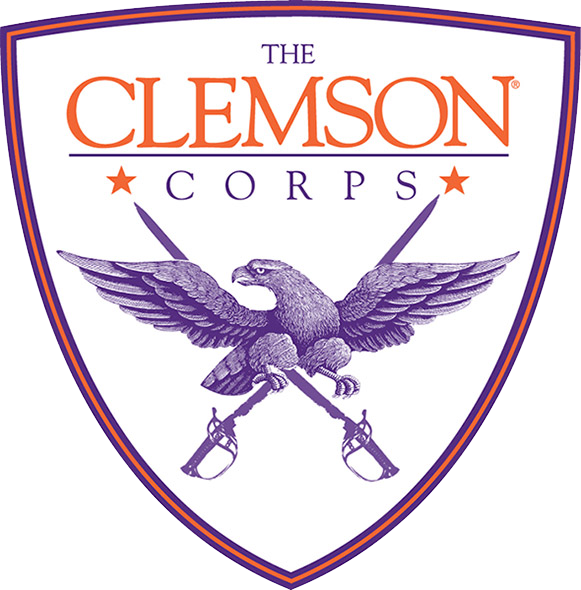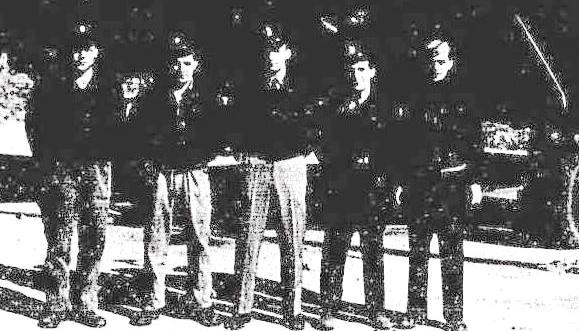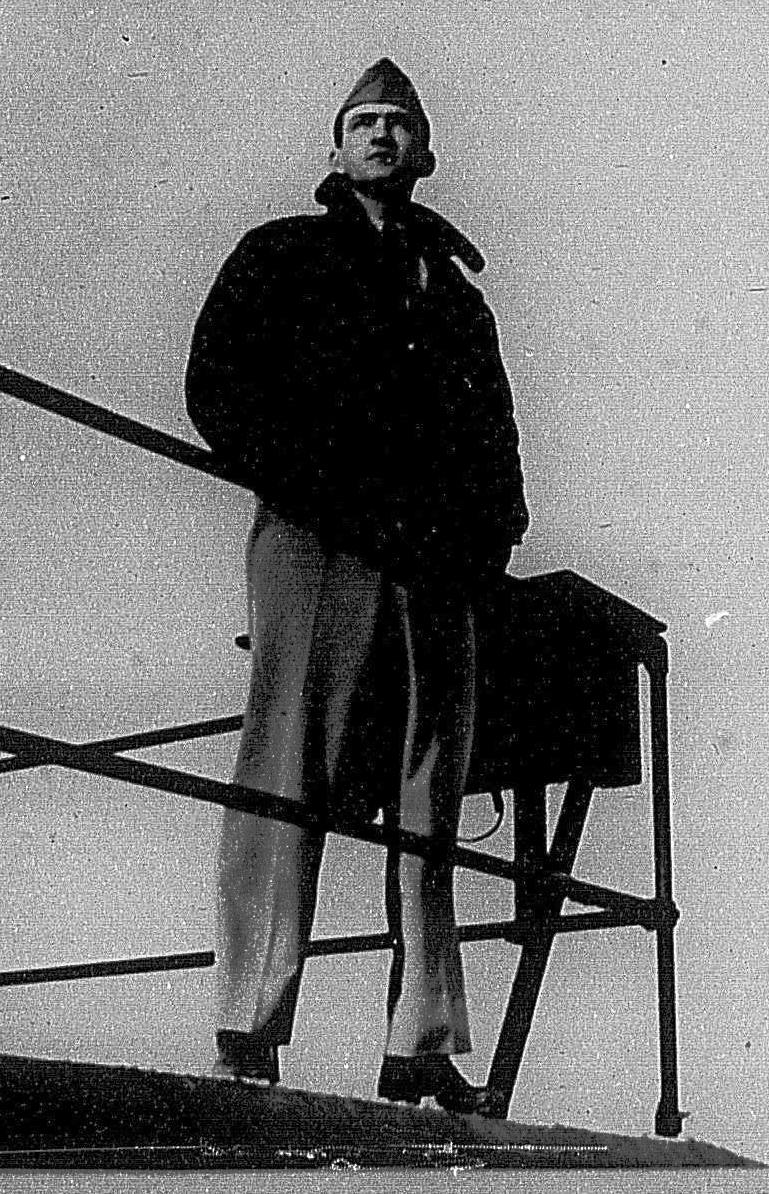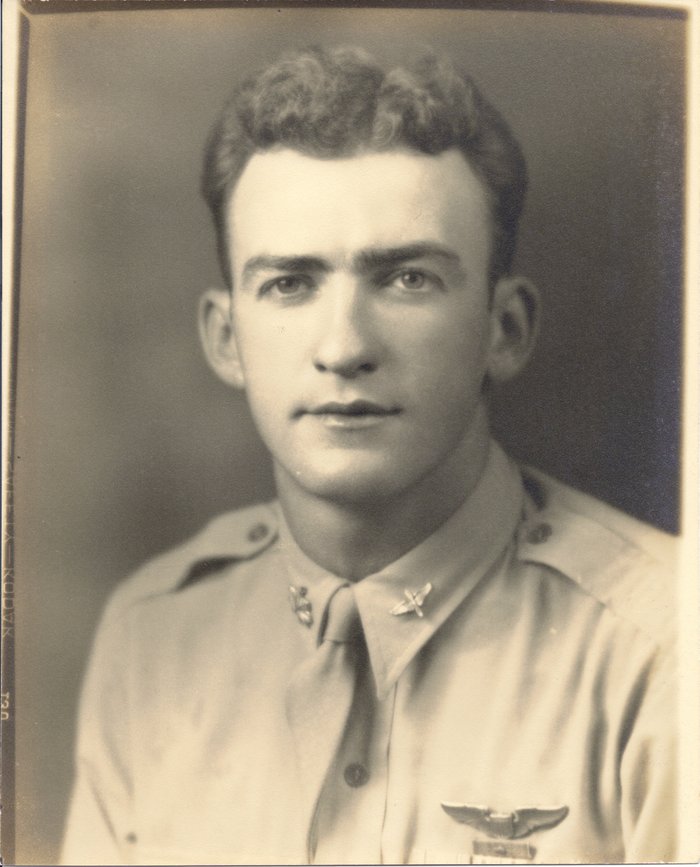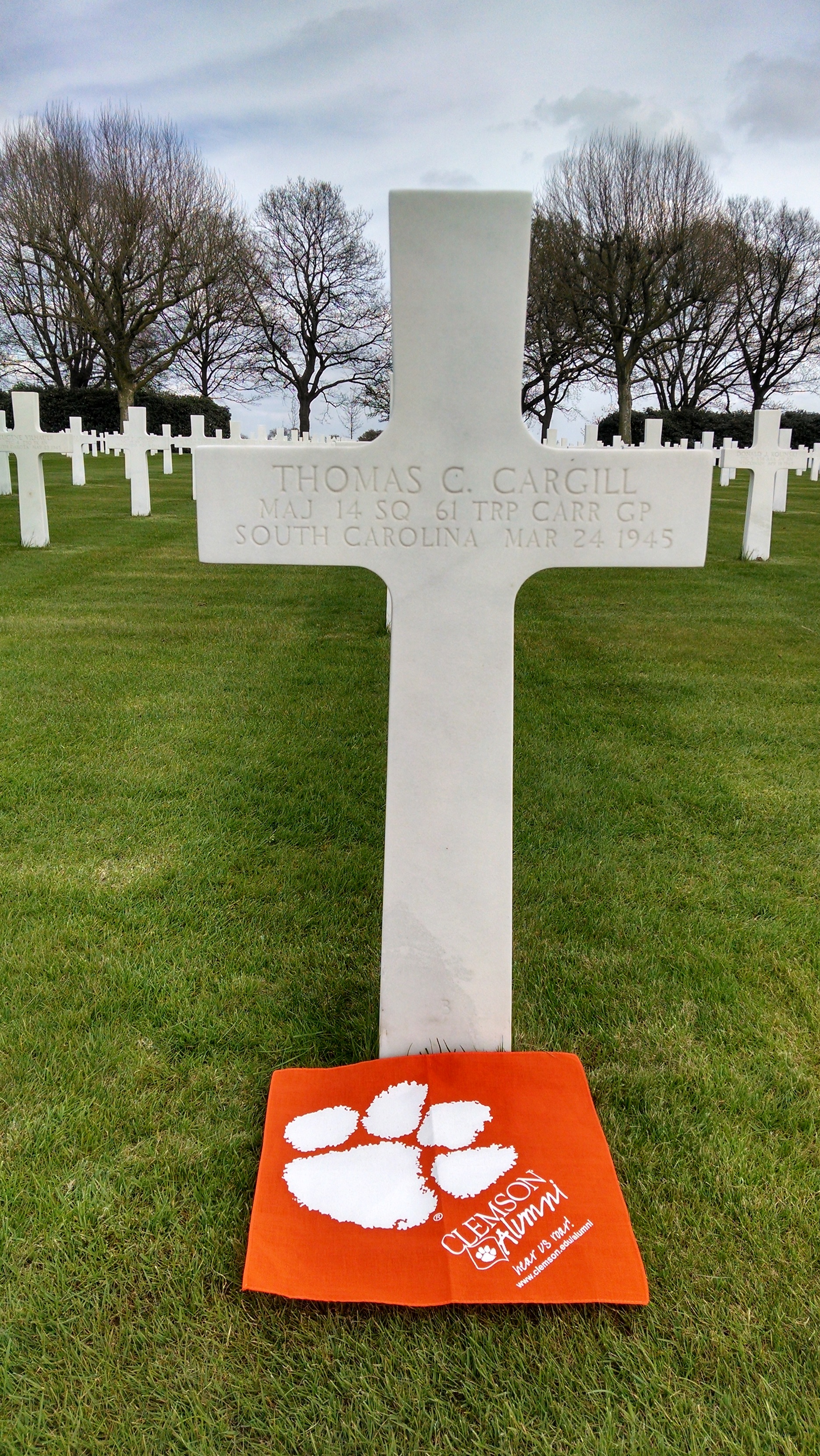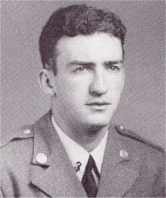
Thomas Clayton Cargill

1942
Textile Engineering
Boxing 2; Football and Track; Sigma Phi 2; Attended Clemson during 1938-1941 school years.
Columbia, South Carolina
Army Air Force, Major
14th Squadron; 61st Troop Carrier Group
Distinguished Flying Cross; Air Medal with 2 Oak Leaf clusters; Purple Heart
Jun 6, 1919
Mar 24, 1945
Killed in Action in Germany
Netherlands American Cemetery and Memorial, Plot P, Row 3, Grave 3. Memorialized in Oakwood Cemetery, Montgomery.
NE
Personal Remembrances
A letter from Major Robert R. Pearce, somewhere in Europe, a classmate of Major Cargill.
1 May 1945
Dear Mr. Cargill,
Your most enjoyable, but yet disheartening letter of 17 April arrived yesterday. It was a most upsetting one for me because of my close and valued friendship for Clayton. I knew he was back up this way from Italy and Sicily, but since the invasion and our unit has been moving right along with army troops, and I had very little opportunity to see any of the troop carrier units. I’ve seen them often, however, heading for the great but dangerous airborne attacks. I was in Aachen, Germany 24 March when thousands of planes and gliders carried the airborne units across the plains. It was a night never to be forgotten, but now I’d like to forget forever. Clayton’s squadron undoubtedly played a major point in that great battle, but it was a dear price to pay. I know it must appear useless and hopeless, Mr. Cargill, but your spirit, the spirit expressed in your letter is certainly one of courage and valor, truly worthy of the deeds Clayton has done in these 3 years of war. I know the news of his missing has been a heartbreaking ordeal for you and Mrs. Cargill and your daughter, and I know that your prayers and mine added will help – if not to bring Clayton back maybe to end this terrible blood bath that our world is going through and end this war. I promise I will contact the 61th Troop Carrier Group and try to get some information for you. No doubt his troop commander has written you the details by now. I do hope so. I am contacting them immediately. I’ll write you again as soon as I hear from them. I am as afraid as you are to know the truth. Nothing is as bad uncertainty. My cousin young Captain Dick Pearce, Clemson ’43, is missing in also missing in a B-17.
Clayton and I had a few minutes together in Naples, Italy last spring which was a great help to us both, I think. He is one of my closest friends, and we talked of old times and the future together often. I’m only praying that we can both share in that future we so often spoke of. He was in one of the finest outfits we have in our country. I’ve been familiar with it for years now in different places. Clayton was an outstanding officer in that group of that I know for sure. His ability was only exceeded by his courage. He was never short of that.
Keep praying, keep hopinguntil the final “yes” or “no” is given to you by the War Department. There is always a hope. I have it for him, but at the same time I try to always be prepared for the worst. The worst happens so often, Mr. Cargill, but seldom to me as close
My best to Mrs. Cargill and the family. (Write the War Department too, they should have some more information) My very best to you, Mr. Cargill.
Sincerely,
Roy Pearce
Additional Information
Missing Air Crew Report # 13507;
Aircraft Model: C-47 A; S/N# 42-93798;
Organization: Location-Airstrip B-92; Command or AAF/AF-1X TCC; Group- 61st T CGp; Squadron- 14th T C Sq;
Place of Departure- Chipping Ongar, England;
Intended Destination- Germany;
Type of Mission- Paratroop;
Date: 24 March 1945; Time: 9:57;
Reason Aircraft was Lost: Enemy Anti-Aircraft;
Number of Persons Aboard Aircraft: Crew-5 Passengers-0 Total-5
List of Crew:
Pilot: Cargill, Thomas C., Major 0-789 680 (MIA)
Co-Pilot: Rothrock, John B., 2nd Lt. 0-769 560 (MIA)
Navigator: Tovey, George A., Capt. 0-800 673 (MIA)
Crew Chief: St. John, Olen K., T/Sgt. 38 013 526 (MIA)
Radio Operator: Straley, Earl K., S/Sgt. 13 009 904 (MIA)
Statement
I was flying as Deputy Leader of the right wing of Major Cargill’s ships no. 42-93798, Chalk No. 46, and after dropping our troops on the D Z, Major Cargill dropped the nose of this ship to pick up speed, he went, I imagine, about three fouths (3/4) of a mile, then went into about a 30 degree bank for a 180 degree turn for our return heading. As he was rolling out a heading of about 220 degrees he was hit to the best of my knowledge in the left engine, or left side of cockpit the plane immediately left a trailing stream of smoke seemed to make a dive for the deck. I, sensing his trouble, pulled up over him and to the left of him. From that time on, my Co-Pilot saw the rest. My Co-Pilot was Lt. Theodore Walker.
James E. Drake, Capt., Air Corps
Pilot, 14th Trp Carr Sq.
Statement
I was Co-Pilot for Capt. Drake on Airplane 381, chalk no. 47. I was flying up until all troops had left the ship, so I observed little up until that time, other than troops leaving Major Cargill’s ship. His ship immediately pulled ahead, and began a slow diving turn to the left. I noticed we were only a few hundred feet above ground at about 210 degrees, when we straightened out about 50 yards behind Major Cargille’s ship and slightly to the right. I saw several bursts of flak around the Major’s ship. A few seconds later, smoke seemed to be coming from suddenly nosed down as if going down on the deck to get our of our way. I saw one parachute partially open and immediately crash into trees. I could see flames throughout the ship. The left wing tip hit a house I believe. The nose hit the ground breaking fuselage, as the tail came up. The tail half of the fuselage went crashing into the trees along the road. Everything I saw of the ship was flaming wreckage, and black smoke was pouring out of a hole in the roof above the Pilots seat. I do not think any of the crew survived.
Major Thomas C. Cargill
Commander, 14th Troop Carrier Squadron
June 6, 1919 – March 24, 1945
Thomas Clayton “Doc” Cargill was born on June 6, 1919 in Montgomery, Alabama where he lived until after he had completed grade school. He later moved to Columbia S.C. where he spent his high school years. Doc considered Columbia to be his home until the time of his death.
Doc excelled in sports in high school. He was the starting quarterback on the varsity football team and he also ran in track. Upon graduation from high school, Doc accepted an athletic scholarship from Clemson College to play football and run track while majoring in textile engineering. He played halfback on the varsity team for his first two years and would have been on the squad through his senior season had he not left school. Even though he was in school only three years, he set a school record in the 440 yard dash.
After completing three years at Clemson, Cargill joined the peacetime Air Corps on October 1, 1941, starting at Maxwell Field in Alabama. Doc took his first solo ride after seven hours and 45 minutes of dual instruction. This was during his primary training based at Arcadia GA. From there he went into basic flying school at Augusta GA. Doc then traveled to Turner Field in Albany Ga. for advanced training in twin engine planes. Thomas C. Cargill was awarded his pilots silver wings and second lieutenant gold bars upon his graduation from flying school on May 20, 1942. It was relatively certain he would be flying a multi engine plane but had no way of knowing what kind it would be.
Second Lieutenant Cargill was immediately assigned to the troop carriers. He spent his first five days at Billy Mitchell Field in Milwaukee WI., but did no flying. On May 27, 1942 he was assigned to the 61st Transport Group stationed at Pope Field in NC. This was the predecessor of the 61st Troop Carrier Group (TCG). He was then assigned to the 15th Troop Carrier Squadron (TCS) as one of the original Second Lt. pilots. The troop carriers flew the twin-engine McDonald-Douglas C-47. Doc soon became one of the top pilots. On September 22, 1942 the 15th was transferred to Lubbock, Texas to practice towing gliders. Cargill and the 15th compiled an enviable record while stationed there. While stationed in Texas, Doc was named Liaison Officer, 3rd in command of the squadron. In November 1942 he had earned a promotion to First Lieutenant.
Upon completion of training in Texas, the 15th returned to Pope Field to await Foreign Service. On April 17, 1943 Doc had earned another promotion to Captain. In May 1943 the 15th was transferred to the 12th Air Force and reported to Lourmel Algeria to resume operations. Capt. Cargill flew C-47A # 42-23300 “Hard Rock” via the Southern Atlantic route. (Through South America, Ascension Island, to Accra, then north to Casablanca, Morocco and then to Lourmel). The 15th continued training there for paratrooper drops & glider tows.
Cargill’s next move was to Kairouan, Tunisia in preparation for a paratroop drop. The 82nd airborne was stationed there. It was here in North Africa that Captain Cargill was assigned as Operations Officer, 2nd in the squadron chain of command. On July 9, 1943 he participated in Operation Husky which dropped paratroopers into Sicily. This was the first combat mission for Cargill & the 15th Cargill piloted “Hard Rock” carrying elements of H. Company, 504th Parachute Infantry Regiment of the 82nd Airborne Division, to a drop zone near Niscemi, Sicily. All planes and crews returned safely. His second combat drop during Operation Husky II on July 11,1943 would have quite a different outcome. The communication between Patton’s Army and the US Navy supporting the invasion were not clear. The route the airborne troops would be taking carried them over the supporting US fleet. Nervous US Navy gunners mistook the troop carrier C-47s for the German twin engine JU 88 bombers which had just bombed them shortly before the C-47s appeared overhead and opened fire. A total of 24 C-47s were shot down, two of which were from the 15th. Among the crews of the 15th, only one pilot was seriously injured.
On September 2nd, 1943 the 15th moved to a new base in Sicily, which was Licata South. September 13th and 14th saw the 15th drop paratroops of the 82nd airborne to a DZ near Agropoli, Italy as part of Operation Giant. Since the 15th did not have a large supply of pilots at the time, it is likely that Captain Cargill participated in both missions. October 5th, 1943 the 15th moved to its second base in Sicily at Sciacca. They resumed normal operations here for next five months.
In February 1944 the 15th packed up operations for a change of station to Station 483 at Barkston Heath England and the 9th Air Force. Cargill and the 15th started a rigorous training schedule to prepare for the Cross Channel invasion of Hitler’s Fortress Europe. The air crews trained in paratroop exercises with the airborne divisions as well as towing gliders to keep them in battle ready condition. On April 1st, 1944 Capt. Thomas C. Cargill was promoted to major.
On June 6th, 1944 (his 25th birthday) Cargill, piloting C-47 A # 42-92897, and the 15th took off at 2:32 am for the assault on the European Continent. The 15th carried elements of HQ Company 2nd Battalion 507 PIR of the 82nd Airborne Division to DZ (T) just outside of St. Mere Eglise, France. Although the weather deteriorated badly as the troop carriers reached the continent, 17 of the 18 planes in the 15th put their troops within 1 mile of the DZ. Cargill was deputy leader on the D-Day mission which would have put him in command of the 61st Troop Carrier Group if Col. Mitchell, the group commander, in the lead ship was shot down or in any other way incapacitated. Cargill cared deeply about his squadron and its men. 1st Lt. Claude Breeden was shot down on D+1 and had to ditch in the English Channel. The crew received only minor injuries. Lt. Breeden remembered that Cargill personally flew down to Exeter to pick up the lucky crew and return them to Station 483 at Barkston Heath.
Major Cargill was granted thirty days leave in mid July. He returned home to Columbia, South Carolina to visit family and friends. Cargill returned to the squadron on September 18, and was transferred into Group as Liaison Officer. On December 18th, 1944 the squadron Commanding Officer of the 14th TCS Lt. Col. Lewis S. Frederick Jr. was killed in an accident and Major Cargill was transferred from group into the 14th as the new squadron commander. Lt Col.Frederick had joined the Air Corps the same day as Cargill at Maxwell Field and the two men had been together every step of the way, only differing in their squadron assignment. Cargill moved into the command role easily and was well liked and respected by his men. On March 13th, 1945 the 14th packed up for another change of station to Abbeville, France.
On March 24, 1945 Cargill (in plane #42-93798) and the 14th led Serial B-2 of Operation Varsity. Varsity was the largest and last airborne operation of WWII. The 14th carried elements of the Canadian 1st paratroop regiment to DZ (A) across the Rhine River near Wiesel, Germany. As the planes exited the DZ they were to make a left bank to turn and head back to their new base. As Cargill’s ship went into the bank, his plane flew into what looked like a stream of tracer fire and was seen to start puffing smoke from around the left wing. Shortly after, there was smoke seen coming from the cockpit. Cargill’s plane never came out of the bank and quickly lost altitude. The left wing hit a house as it neared the ground tearing it off and the rest of the ship hit the ground and exploded. There was evidence of 1 parachute coming out of the plane at about tree top level. The parachute was shredded in the trees and all aboard the plane were killed. Major Thomas Cargill was buried at the Netherlands American Cemetery in Margraten. His grave is in Plot P, Row 3, Grave
Researched and written by: Randall W. Lewis March 17, 2011
** In October 2012 I attended the Glider Pilot Reunion in San Antonio, Texas and was fortunate to find Mr. Hilary H. Osborn Jr. in attendance. Mr. Osborne was a glider pilot in the 53rd and flew into Holland on September 18, 1944. Mr. Osborn assured me that the glider towed by Cargill was on the ground in Holland on September 19th. He did not elaborate on how he attained this information.
